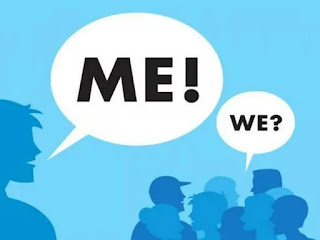Cross Cultural students in the Classroom
October 26, 2020
Cross Cultural students in the Classroom
America is a diverse country with many people immigrating. Our schools are full of students from different countries with different ideas of how to learn. These classrooms would be called a Cross Cultural Classrooms. Teachers need to be aware of the diverse ways a student learns but also their cultural behaviors to understand their students. Here are a few examples of possible cross cultural students in an American classroom.
Each day Bai, a student from China, comes into class and says, “Hello, teacher”. She sits down quietly and avoids looking directly in the teacher’s eyes. As class progress, she follows along nodding her head ‘yes’ and seems to be understanding in reality she feels lost and overwhelmed. The teacher thinks she’s a good quiet student and must be understanding what is being taught.
Phil, a student recently from Boston, comes into class late and is noisy as he settles in his desk. He often interrupts the teacher with comments and will gather his belongings back into the backpack before the teacher is done with class. The teacher sees this as normal and doesn’t think any more about it while the Chinese student is ashamed for Phil.
Tony and Michael are from Brazil. Recently, they were sent to the principal’s office for arguing in class. They began to discuss what the teacher was saying loudly with each other. When the teacher asked them to stop and be quiet, they asked ‘why, we’re just talking about the discussion’. The teacher thought they were disruptive, disrespectful, and interrupting the class. They boys were simply passionate about the subject and wanted to discuss.
In each one of these scenarios the students were acting within with their cultural norms. The teacher; judging them with her own cultural norms, didn’t understand them. Bai, needed help and was unaccustomed to asking for it from an authoritative figure. Tony and Michael were simply expressing themselves and could have added to the class discussion, if only the teacher wasn’t offended by their outburst. Phil show of disrespect is normal for him but the teacher may have expected it. Teachers need to have a better understanding of the diverse cultures in their classrooms.
I like this advice given to teachers as they teach in our diverse society. “Whenever a student is from a different place or ethnic group and does anything weird, you have to give them the benefit of the doubt. Even though you may be interpreting it negatively, it may not be meant negatively. There’s a principle that you need to understand when you go into teaching in the diverse country in which we live.” Professor John Ivers BYU Idaho
As teachers and as human beings, I hope we can learn to give each other the benefit of the doubt. It would be a better world if we listened first to what people are trying to tell us instead of what our cultural norms interpret they are trying to relay.
Some of the ways we could enlighten our understanding of each other is to ask people about themselves and take note of how they interact with others. Attend culture celebrations of people living near us to get a new perspective on our students. They will feel supported and teachers will have educated themselves on cultural norms.
Sources mentioned:



This comment has been removed by the author.
ReplyDeleteAlisa.
ReplyDeleteI like the examples given. We need to obtain a new perspective, being of open mind to learn and assimilate new behavior that helps us to achieve as Teachers in this world cross cultural. If we give the benefit of the doubt, we will have a better auto-control in our emotions.
Hi Alisa
ReplyDeleteYour post is fantastic and well detailed! I loved that you mentioned that we must first listen and not try to interpret what they are trying to convey to us. Good job!